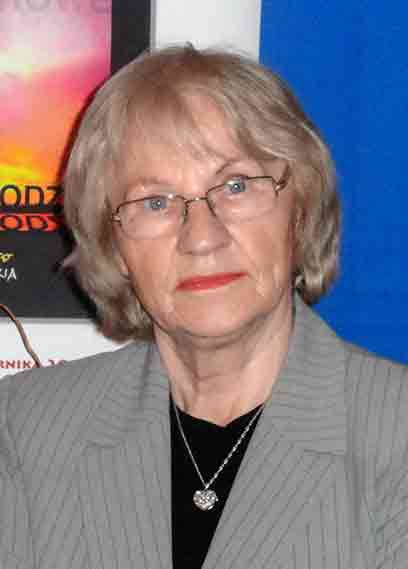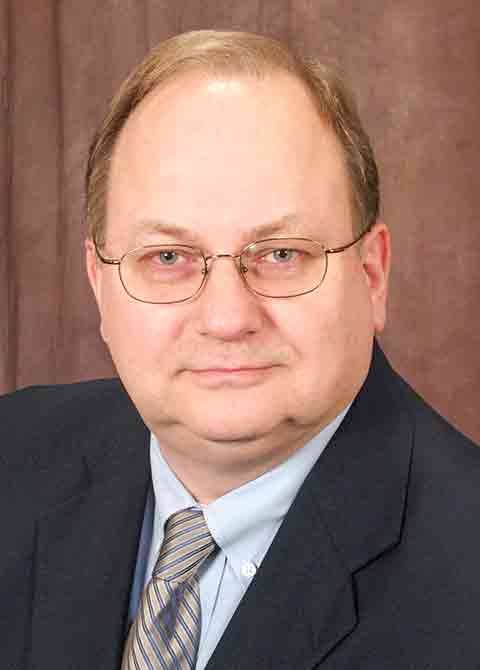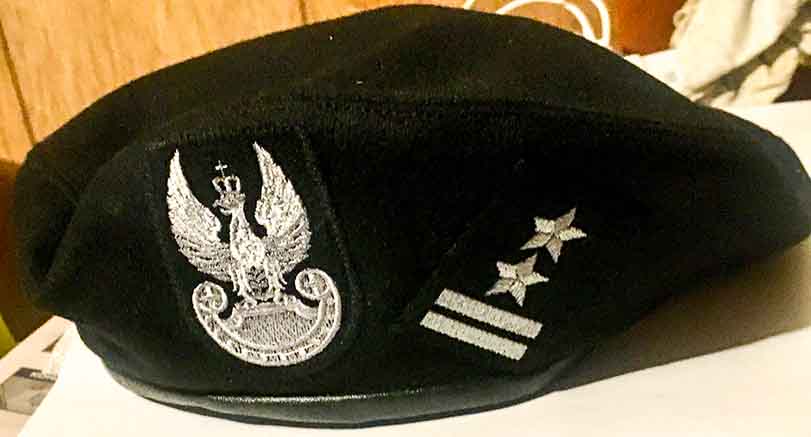The 2nd and 3rd days of May are very important holidays in the life of the American Polonia, but also in the life of the entire global Polish diaspora. On May 2 we celebrate Flag Day and the Day of Polish Diaspora, and on May 3rd — the Constitution Day. This year, the Polish community in Milwaukee hosted representatives of the Embassy of the Republic of Poland in Washington, D.C., the military attaché Major General Cezary Wiśniewski and his deputy, Lieutenant Colonel Karol Budniak.
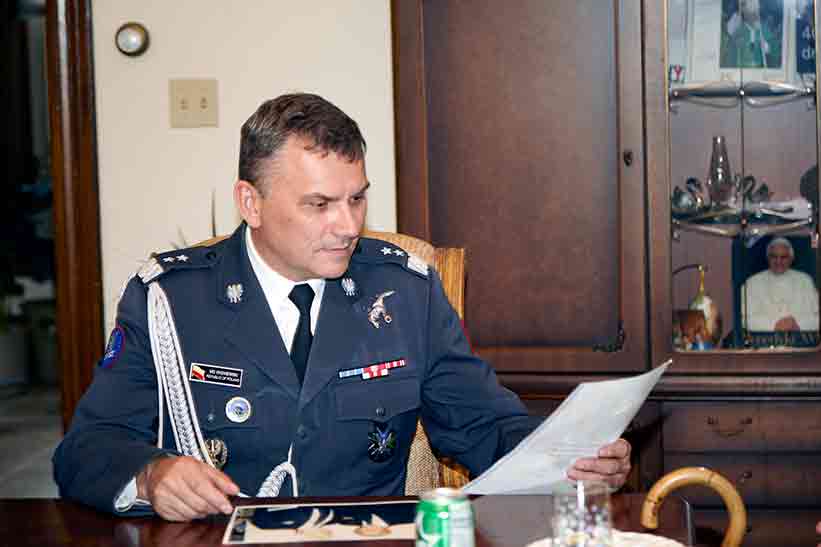
Military attaché at the Embassy of the Republic of Poland in Washington, D.C., Major General Cezary Wiśniewski
At 10.00 AM, in front of one of the oldest Polish churches in Milwaukee built by Polish immigrants, St. Cyril and Methodius, a group of Polish activists awaited the guests. Among them were two elderly World War II veterans: Maj. Leonard Jędrzejczak and Corporal Tadeusz Cisek, and also Congressman of the State of Wisconsin Ken Skowroński, and representatives of the editorial office of Kuryer Polski originally published in 1888-1962, reactivated in the form of an internet portal: Waldemar Biniecki, its editor-in-chief, Katarzyna Murawska, editor, and Andrew Woźniewicz, editor. The photographic documentation was being created by Marcin Murawski. The host of the meeting was the priest of the Polish parish, Fr. Edward Traczyk, who invited the guests into the conference room.

Na pierwszym planie siedzą (od lewej) mjr Jędrzejczak i kpr. Cisek
Over a cup of hot tea, memories of the veterans flowed. The war found Maj. Jędrzejczak (born in 1922) returning from a scout camp on August 31, 1939. With a lily and a scout cross, he was sent to an internment camp in Hungary, then to the Middle East, to join the Carpathian Brigade. Under the command of Gen. Kopański, Gen. Duch, and Gen. Anders, he walked the route from Palestine, through Tobruk and Monte Cassino, to Bologna. There he met many friends, including the future President of the Republic of Poland in Exile, Ryszard Kaczorowski, with whom he kept close ties until his tragic death near Smolensk in 2010.
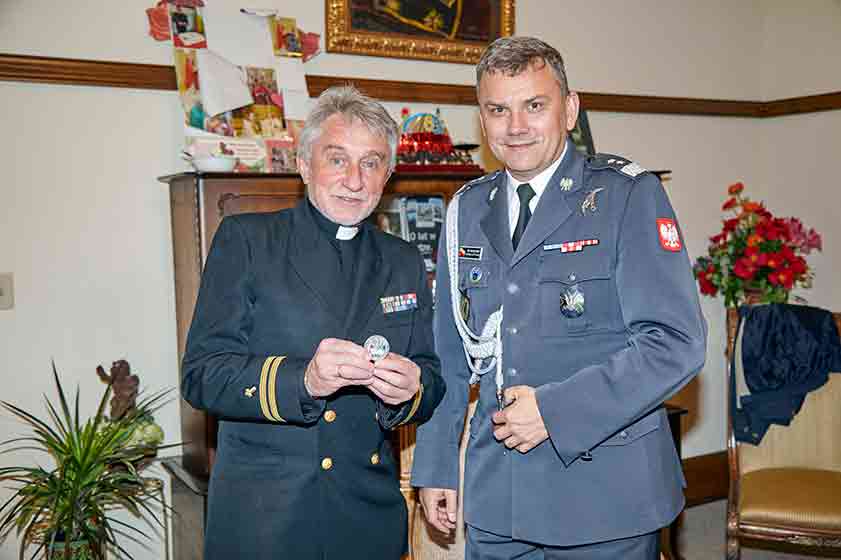
Fr. Edward Traczyk showing the commemorative coin received from gen. Cezary Wiśniewski
Corporal Tadeusz Cisek was born in 1923 near Zaleszczyki and was forcibly taken with his family to Siberia. As a proud teenager, he was saved only thanks to the amnesty, which allowed the exiles to join the Polish Army. He spent a long time looking for a rallying camp and quickly enlisted in the parachute brigade commanded by General Sosabowski. He was one of those for whom the end of the war turned out to be "one bridge too far" - he took part in the operation "Market Garden" near the Dutch city of Arnhem. Last year, T. Cisek took part in the ceremony to commemorate the liberation of the city of Breda, Holland.
In 1951, in Milwaukee, they met Captain Antoni Rogoziński, communications officer of General Maczek's command staff. Together they formed the Association of Polish Combatants, taught English to the "Dipis" (DPs, Displaced Persons, a term used by the Allies to refer to people who "as a result of the war found themselves outside their country and want to either return to their country or find a new homeland, but cannot do so without help."), they started families and dreamed that they would spend the next Christmas in Poland. Today their dreams can come true, but the years have taken their toll, yet there is still great nostalgia.

The guests from the Polish Embassy hail from a different generation of soldiers. The meeting was an opportunity for a cordial exchange of thoughts dominated by patriotism and the glow of the Brightest Republic. Fr. Edward Traczyk, who served as a military chaplain in the US Marine Corps, appeared in the uniform of a Navy officer, acting as a link between the generations and between the nations. At the end of the meeting, he prepared a surprise for everyone by offering a military pea soup that he had prepared himself.
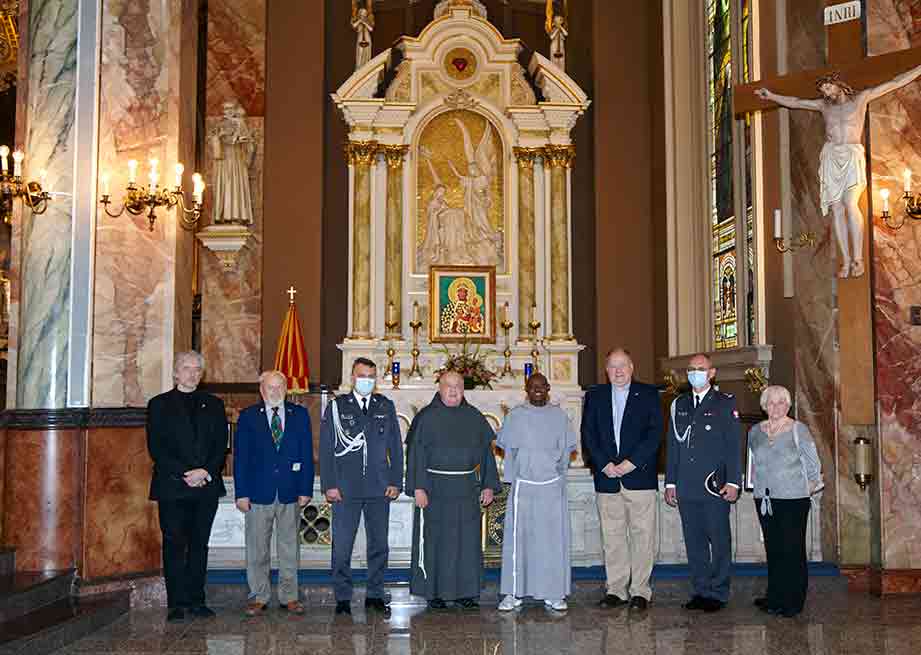
Visiting the St. Josaphat Basilica in Milwaukee
The next part of the meeting was a visit to the magnificent St. Josaphat Basilica, paying homage to the Tadeusz Kościuszko monument, and a visit to the cemetery of St. Adalbert where the graves of Blue Army soldiers, Poles of World War I and II in the ranks of the American army, and Poles occupying high positions in the American society are located, among them, that of Congressman Klemens Zabłocki.
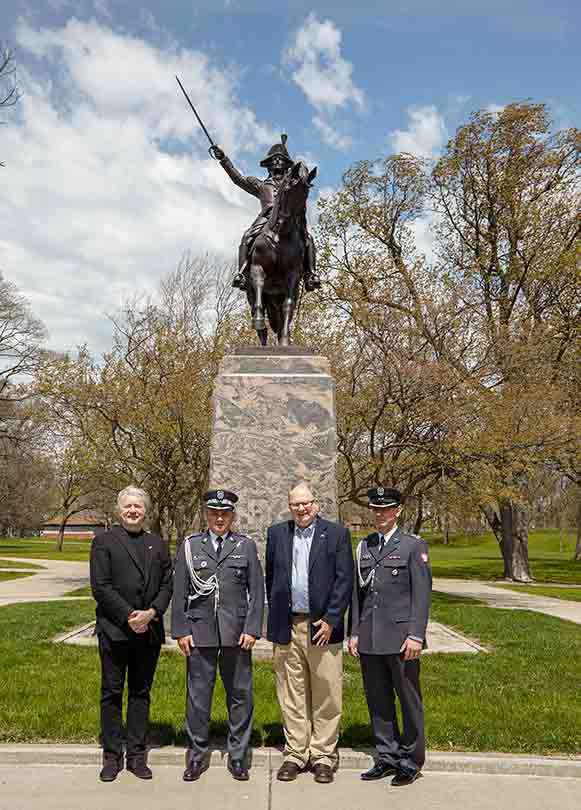
At the Tadeusz Kościuszko monument in Milwaukee (left-to-right): ed. Woźniewicz, gen. Wiśniewski, ed.-in-chief Biniecki, leut. col. Budniak
We would like to thank the uniformed Polish diplomats for their remembrance and their tribute to the Polish American community in Wisconsin.
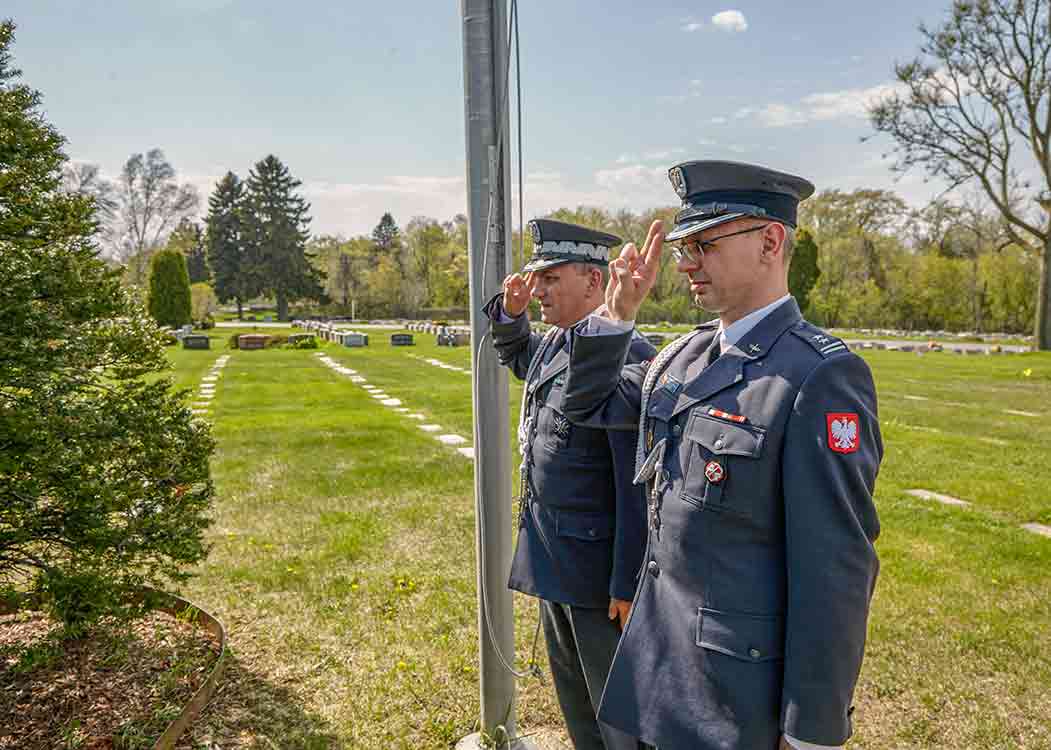
Tribute to fallen soldiers at St. Adalbert cemetery in Milwaukee. Major General Cezary Wiśniewski (left) and Lieutenant Colonel Karol Budniak (right)
Photography: Marcin Murawski



